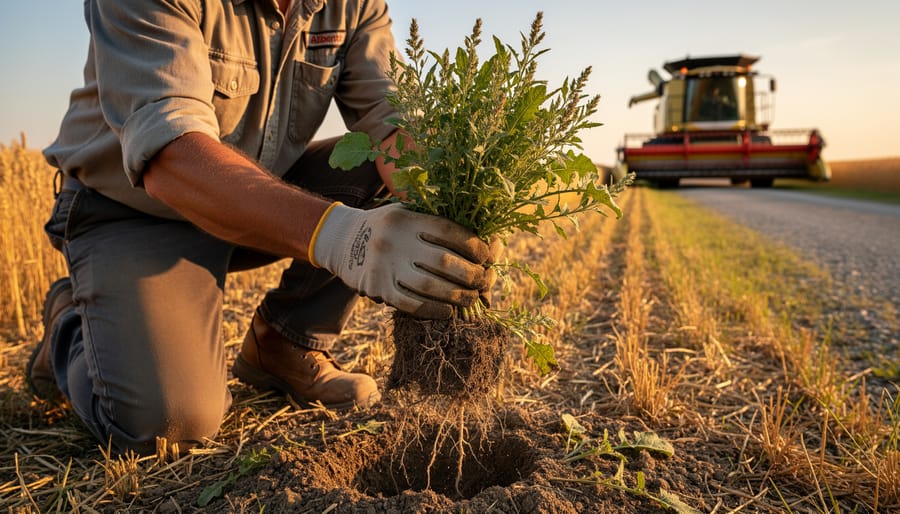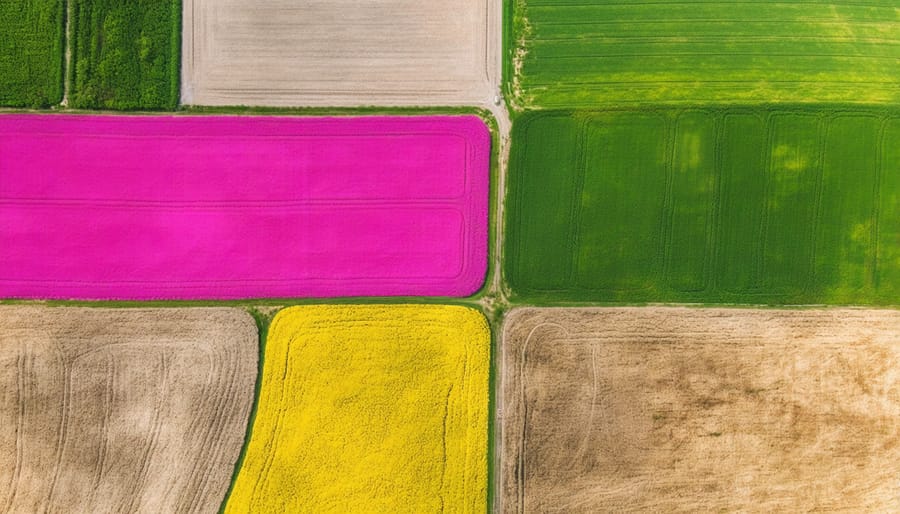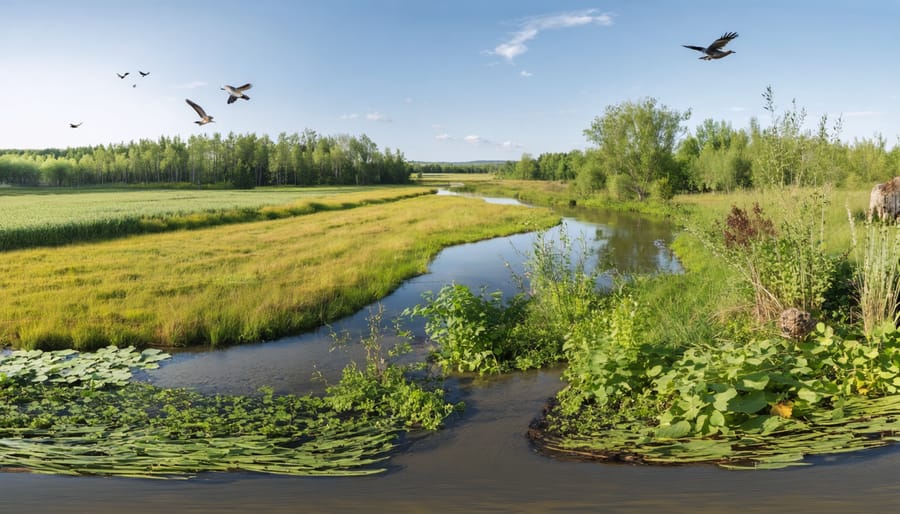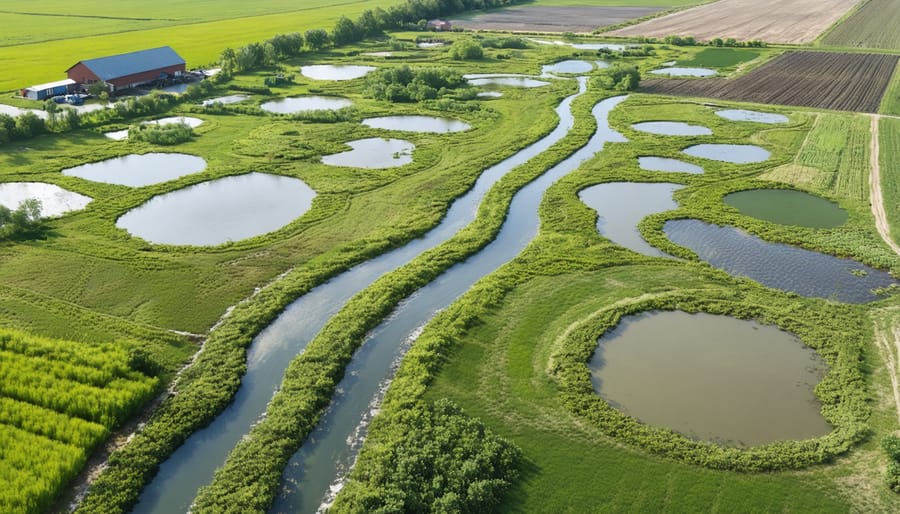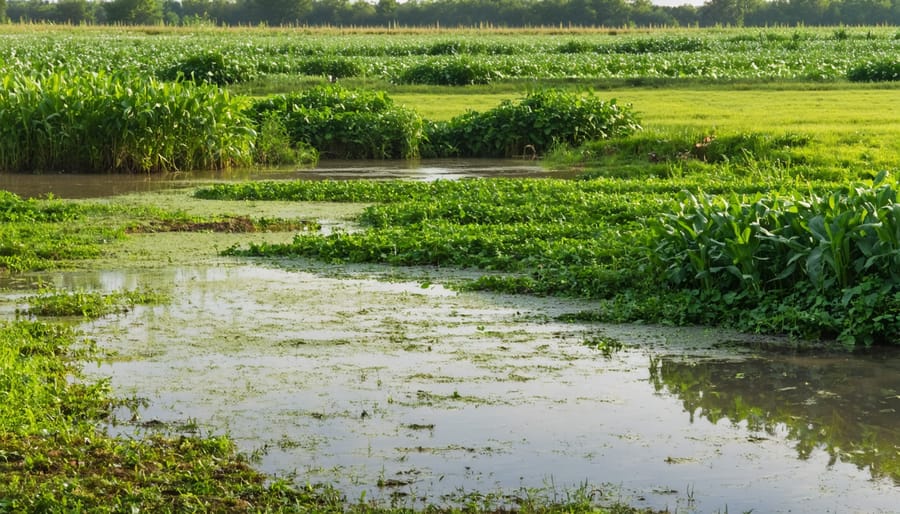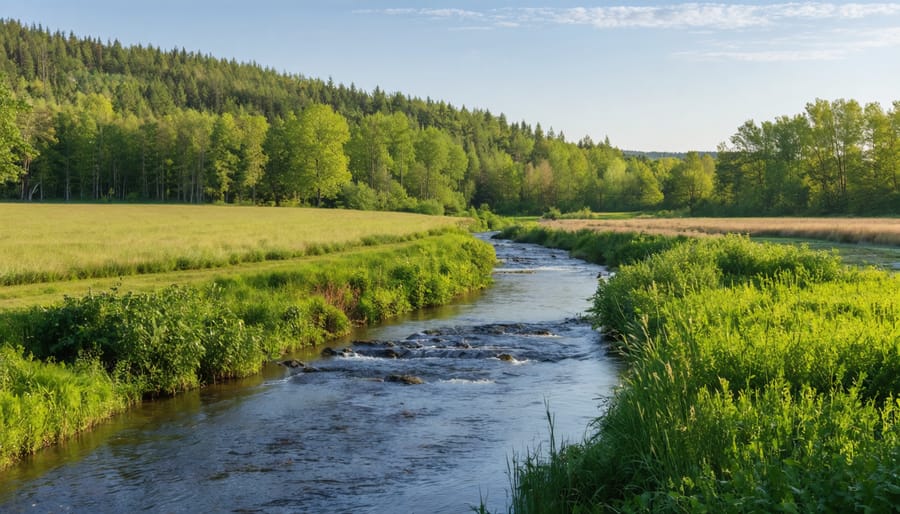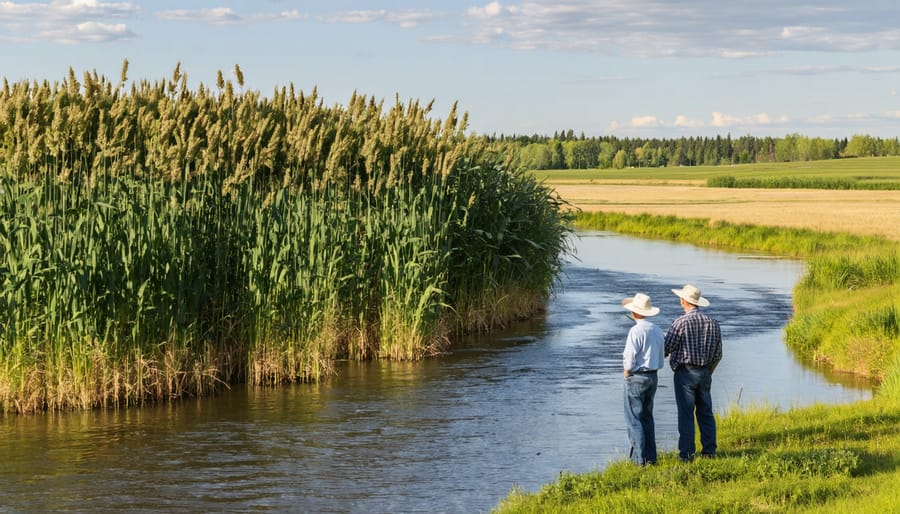Embrace indigenous wisdom to nurture sustainable agriculture. For millennia, indigenous communities have cultivated the land in harmony with nature, developing practices deeply attuned to local ecosystems. Their time-honored methods hold vital lessons for modern farmers seeking to build resilient, regenerative food systems.
From intercropping and companion planting to agroforestry and water conservation, indigenous agricultural practices offer a wellspring of knowledge to draw upon. By integrating these techniques, farmers can enhance biodiversity, improve soil health, and mitigate the impacts of climate change.
As we face the challenges of feeding a growing population while preserving our planet, indigenous agriculture lights the way forward. It invites us to reconnect with the land, to learn from the wisdom of our ancestors, and to cultivate a more sustainable future – one seed, one harvest at a time. In the fields and gardens of indigenous communities, we find not just food, but a roadmap to a more resilient, harmonious way of life.
Companion Planting
Companion planting, a time-honored indigenous practice, involves cultivating complementary crops together to enhance yields, manage pests, and improve soil health. This sustainable approach leverages the natural synergies between plants, creating a more resilient and productive agricultural system. In Alberta’s climate, several companion planting strategies can be employed to support the growth of local crops.
One effective pairing is planting nitrogen-fixing legumes, such as peas or lentils, alongside nitrogen-hungry crops like corn or wheat. The legumes fix atmospheric nitrogen in their root nodules, making it available to the neighboring plants and reducing the need for synthetic fertilizers. Another beneficial combination is planting tall, sturdy crops like sunflowers or corn with climbing vines such as beans or peas. The tall plants provide support for the vines, maximizing vertical space and increasing yields per square meter.
Companion planting can also aid in pest control. Planting aromatic herbs like basil, mint, or sage near vegetable crops can deter pests with their strong scents. Marigolds, a favorite among indigenous gardeners, release compounds that repel nematodes and other soil-dwelling pests when planted around tomatoes, potatoes, or root vegetables. Additionally, planting diverse crops together confuses pests, making it harder for them to target specific plants and reducing the need for chemical pesticides.
By embracing the wisdom of indigenous companion planting, Alberta farmers can foster a more sustainable and resilient agricultural system that works in harmony with nature. This practice not only improves crop health and yields but also contributes to the long-term well-being of the soil and the environment.
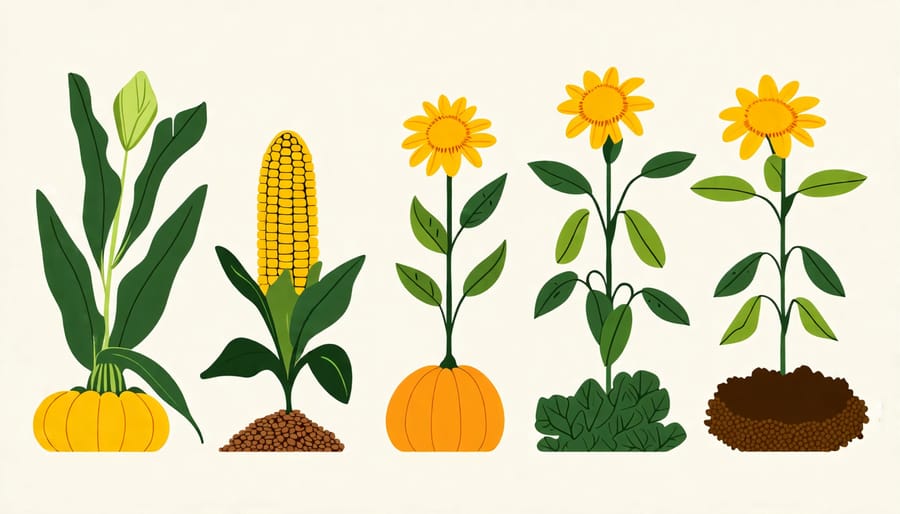
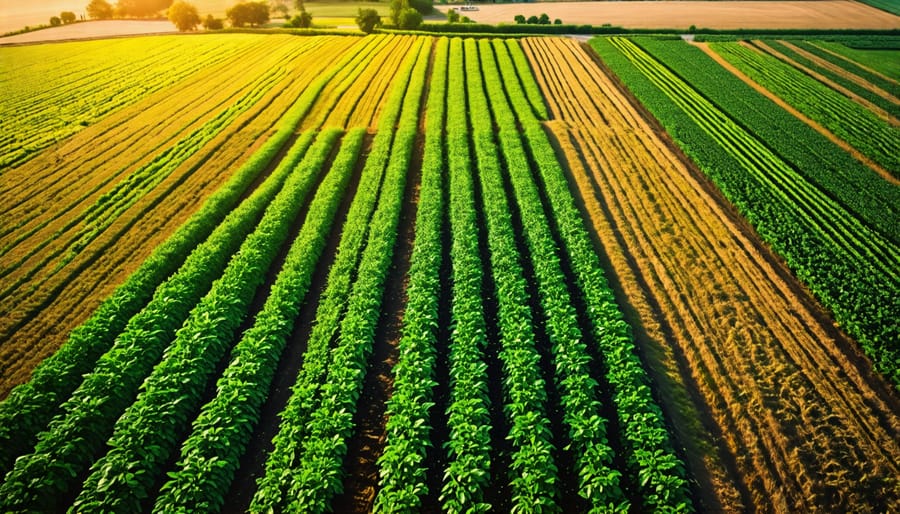
Crop Rotation
Crop rotation, a time-honored tradition in agriculture, offers numerous benefits for Alberta farmers seeking to enhance their land’s productivity and sustainability. By alternating crops across growing seasons, farmers can improve soil fertility, reduce pest and disease pressure, and promote biodiversity on their farms. When planning crop rotations, consider factors such as plant family, nutrient requirements, and root depth to maximize the advantages of this practice.
Legumes, like peas and lentils, fix atmospheric nitrogen in the soil, reducing the need for synthetic fertilizers. Incorporating these crops into your rotation can significantly improve soil health and fertility. Additionally, alternating between deep-rooted and shallow-rooted crops helps break up compacted soil, enhancing water infiltration and root development.
To effectively manage pests and diseases, avoid planting crops from the same family in consecutive seasons. For example, rotate between brassicas, like canola and mustard, and cereals, such as wheat and barley. This disrupts pest life cycles and minimizes the buildup of plant-specific pathogens in the soil.
Implementing cover crops between main crop seasons further enhances the benefits of crop rotation. Cover crops protect the soil from erosion, suppress weeds, and add organic matter when incorporated into the soil. By fostering a diverse ecosystem above and below ground, crop rotation contributes to the long-term resilience and productivity of Alberta farms.
Intercropping
Intercropping, a practice where multiple crops are grown together in the same field, is gaining traction among Alberta farmers as a sustainable agriculture technique. By planting complementary crops in close proximity, intercropping optimizes land use, increases biodiversity, and improves the overall resilience of the farming system. For instance, some Alberta farmers have found success in growing legumes like peas or lentils alongside canola, as the legumes fix nitrogen in the soil, reducing the need for synthetic fertilizers.
Another example of intercropping in Alberta is the combination of wheat and chickpeas. The chickpeas not only add diversity to the field but also act as a natural weed suppressor, reducing the reliance on herbicides. This practice also helps break pest and disease cycles, as the different crops attract various beneficial insects and microorganisms.
Intercropping can also provide economic benefits for Alberta farmers. By diversifying their crops, farmers can spread out their risk and potentially increase their income streams. For example, if one crop suffers due to unfavorable weather conditions or market fluctuations, the other crops can help buffer the loss.
Implementing intercropping requires careful planning and management, as farmers must consider factors such as plant spacing, nutrient requirements, and harvest times. However, with the right knowledge and support, intercropping can be a powerful tool for Alberta farmers looking to enhance the sustainability and resilience of their operations while contributing to a more diverse and vibrant agricultural landscape in the province.
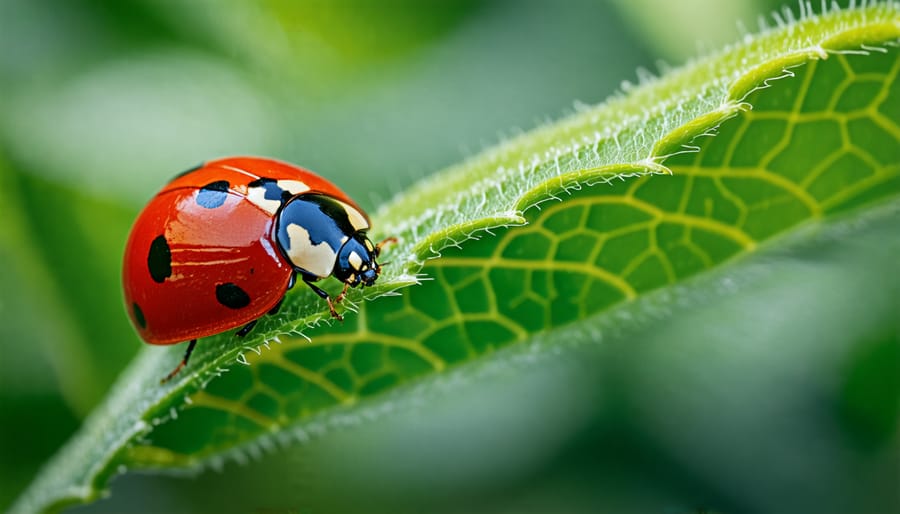
Natural Pest Control
Indigenous communities in Alberta have long relied on natural methods to control pests and maintain healthy crops. These traditional practices prioritize the use of natural predators, beneficial insects, and plant-based repellents to minimize damage caused by harmful pests. One common approach is companion planting, which involves strategically placing certain plants near crops to deter pests or attract their natural enemies. For example, marigolds can be planted alongside tomatoes to repel nematodes, while nasturtiums help keep aphids away from beans.
Another effective method is the use of trap crops, which are planted to lure pests away from the main crop. Once the pests congregate on the trap crop, they can be easily removed or destroyed without harming the primary crop. Indigenous farmers also encourage the presence of beneficial insects, such as ladybugs and lacewings, which prey on common crop pests like aphids and mites.
In addition to these strategies, indigenous communities have developed recipes for organic pesticides using locally sourced ingredients. These concoctions often include a combination of plants with natural insecticidal properties, such as neem, garlic, or chili peppers, mixed with water and a small amount of soap to help the solution adhere to plant surfaces. By sharing knowledge and recipes within the community, indigenous farmers ensure the preservation and continued use of these sustainable pest control methods.
Adopting these traditional practices not only reduces reliance on synthetic pesticides but also promotes a healthier ecosystem by maintaining a balance between pests and their natural predators. As modern farmers in Alberta seek more sustainable ways to protect their crops, they can draw inspiration from the wisdom of indigenous communities and incorporate these time-tested methods into their own pest management strategies.
Agroforestry
Agroforestry, a time-honored practice rooted in indigenous knowledge, offers a sustainable solution for Alberta farmers seeking to enhance their land’s resilience and productivity. By strategically integrating trees into agricultural systems, farmers can harness the power of nature to improve soil health, increase biodiversity, and mitigate the impacts of climate change.
The benefits of agroforestry are manifold. Trees act as natural windbreaks, reducing soil erosion and protecting crops from harsh weather conditions. Their deep roots help to stabilize the soil, while their leaf litter contributes to the formation of rich, nutrient-dense humus. This, in turn, enhances soil structure, water retention, and fertility, leading to healthier crops and higher yields.
Moreover, agroforestry systems create diverse habitats that support a wide range of flora and fauna. By providing shelter, food, and breeding sites for beneficial insects, birds, and small mammals, these systems promote natural pest control and pollination services. This biodiversity not only enhances the overall health of the farm ecosystem but also contributes to the preservation of native species.
In the face of climate change, agroforestry offers a powerful tool for building resilience. Trees sequester carbon dioxide from the atmosphere, helping to mitigate greenhouse gas emissions. They also provide shade and cooling effects, which can protect crops and livestock from the stresses of extreme heat and drought.
Implementing agroforestry practices in Alberta is not only feasible but also highly rewarding. From establishing shelterbelts and riparian buffers to integrating fruit and nut trees into crop fields, there are numerous ways to incorporate trees into farming systems. By working with local experts and learning from the experiences of other farmers, Albertan agriculturalists can develop customized agroforestry plans that suit their unique needs and goals.
As we face the challenges of the 21st century, embracing the wisdom of indigenous agroforestry practices offers a path forward for sustainable, resilient agriculture in Alberta. By working in harmony with nature, farmers can create thriving, diverse, and productive landscapes that will support our communities for generations to come.
Seed Saving and Exchange
Seed saving and exchange is a vital practice in indigenous agriculture that has been passed down through generations. By carefully selecting and preserving seeds from the healthiest, most resilient plants, indigenous farmers ensure the continued genetic diversity and adaptability of their crops. This practice not only safeguards against crop failures but also promotes food security by maintaining a diverse pool of locally adapted plant varieties.
Engaging in seed saving and exchange fosters a sense of community and knowledge sharing among farmers. It allows for the preservation of heirloom varieties that may not be commercially available, as well as the development of new varieties tailored to specific growing conditions. This practice empowers farmers to have greater control over their seed supply and reduces dependence on external seed sources.
For Alberta farmers interested in participating in seed saving and exchange, there are numerous resources available. Local organizations such as the Seed Savers Exchange and the Canadian Seed Library offer workshops, educational materials, and networks for connecting with other seed savers. These organizations also maintain extensive collections of open-pollinated and heirloom seeds that farmers can access and contribute to.
To get started with seed saving, farmers should begin by selecting healthy, disease-free plants that exhibit desirable traits such as good flavor, high yield, and resistance to pests and diseases. Seeds should be collected when fully mature and properly dried before storing in airtight containers in a cool, dark place. Proper labeling, including the plant variety, date of collection, and any specific growing notes, is essential for maintaining accurate records.
By embracing the practice of seed saving and exchange, Alberta farmers can contribute to the preservation of biodiversity, strengthen their local food systems, and build resilience in the face of climate change and other agricultural challenges. This ancient practice holds the key to a more sustainable and secure future for indigenous agriculture in the region.
Conclusion
Indigenous agricultural practices offer valuable insights for creating a more sustainable and resilient farming future in Alberta. From companion planting and crop rotation to low-till methods and natural pest control, these time-tested techniques promote soil health, biodiversity, and long-term productivity. By embracing the wisdom of indigenous agriculture, Alberta farmers can reduce their reliance on synthetic inputs, conserve water resources, and build resilience against climate change. Incorporating these practices not only benefits the environment but also supports the well-being of local communities and preserves cultural heritage. As we face the challenges of a changing world, it is crucial for Alberta farmers to explore and adopt indigenous agriculture methods. By doing so, they can contribute to a sustainable and resilient future for their farms, their communities, and the planet as a whole. Let us learn from the past to cultivate a more promising tomorrow.


